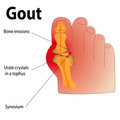Joint Types:
Even though there are more than 180 joints in the body, when it comes to moving you around, they can be broken down into 3 types: 
1. ball and socket joints
2. hinge joints
3. multiple joints.
The larger ball and socket joints located at your pelvis and the smaller ball and socket joints of the shoulder comprise your core structure.
The 4 limbs then follow the pattern of a strong but less flexible hinge joint followed by a more flexible multiple joint. (more…)



